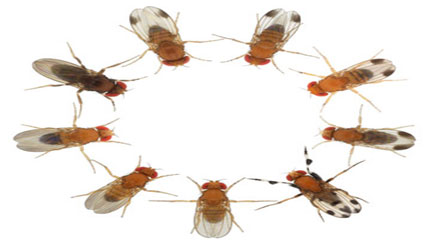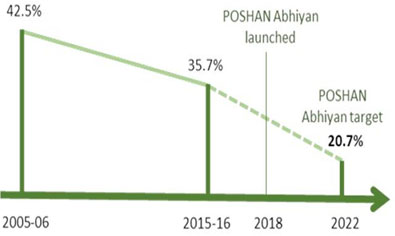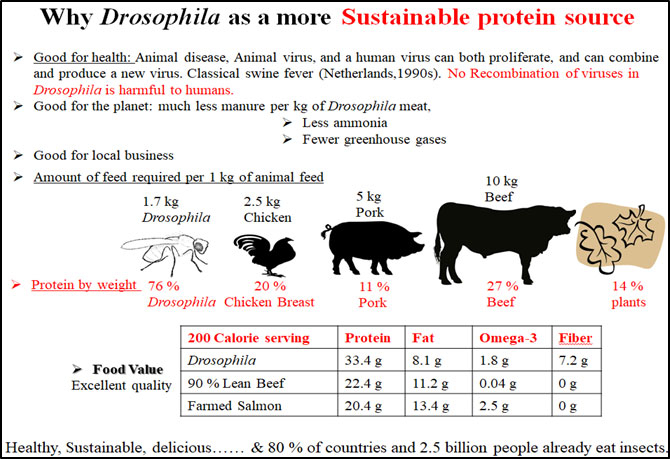Ecology and Evolutionary Genetics (EEG) lab
EEG lab focus on adaptation of organisms (particularly different species of Fruit flies) to environmental stresses including climate change and chemical pollutants, using field sites in the Western Himalayas. A key focus of research of this lab is to evaluate stress related traits with temperature, humidity, nutrition, sex and due to seasonal climate change as well as global climate warming on adult and pre-adult stages. Stress influences specific sex, individual's physiology, genetic variation at the population level, and the process of natural selection. To investigate these different levels of stress effects, this lab intend to integrate approaches from ecology, evolution, ecophysiology and genetics. For investigating the mechanisms of stress resistance, how resistance evolves and what conflicting factors constrain its evolution, Experiments are conducted with Drosophila species in this lab. Integrated pest control options is also developed in this lab, investigating how landscape changes can be harnessed to provide pest control services, contribute to novel approaches for suppressing male lure, and examine new ways to predict species distribution shifts under climate change.

Lab also has interest in how DNA variation predisposes organisms to be more or less affected by their experiences (gene-environment interactions), how experience gets embedded in our biology (epigenetics) and finally how DNA variation interacts with epigenetic processes to affect behavior.
Associated Projects:
-
Project 1: SP/YO/775/2018G
Development and evaluation of integrated pest management module to control fruit flies.
-
Project 2: SP/YO/2019/1165(G)
Sustainable production of insect proteins with new technologies for protein-energy malnutrition.
-
Project 3: 09/1260(0001)2019-EMR-I
Drosophila melangaster: Neophyte In Hypobaric Hypoxia.
Outcomes mapped with the accomplishment of sustainability goals
|
S.No. |
Sustainability Goals |
Outcome |
Project |
|---|---|---|---|
|
1. |
No Poverty |
OK |
Project 1: SP/YO/775/2018G |
|
2. |
Zero Hunger |
OK |
Project 2: SP/YO/2019/1165(G) |
|
3. |
Good Health and well being |
OK |
Project 2: SP/YO/2019/1165(G) |
|
4. |
Responsible consumption and production |
OK |
Project 1: SP/YO/775/2018G Project 2: SP/YO/2019/1165(G) |
|
5. |
Climate actions |
OK |
Project 1: SP/YO/775/2018G Project 2: SP/YO/2019/1165(G) |
For project 1 (SP/YO/775/2018G )
Fruit flies (Bactrocera dorsalis) as a pest is attacking ready-to harvest fruit crops like guava and mango in different parts of the states in India and ultimately decreasing the yield of these fruits.
A majority of guava-growers are suffering from lower yield especially in rainy season due to fruit flies and the damage accounts for about 27% to 42 % of loss in the harvest and 80% in rainy season. In Punjab, the loss has been found to be up to 70% if proper measures are not taken. The use of chemicals to control fruit fly is harmful to consumers as it leaves toxic residue on fruits. So, the bio pesticides can be promoted to check the infestation. The farmers ignore the fallen fruits and infested fruits and spent money on attractants or lure to use in their field which nothing but a lure is made to attract males only which cause no damage to fruits. Females are responsible for damaging fruits because they insert eggs inside fruit which completes it’s life cycle inside fruit and rotten the fruit. To stop this infestation we have prepared attractant and repellent in laboratory conditions and have checked their efficacy in both laboratory and field.
Fruits when sprayed with attractant attract a lot of flies while fruits sprayed with bio insecticide or repellent, repel flies completely and hence help in reduction in fruit damage.
If farmers are given instruction about this damage and bio insecticide then they can improve the yield of their fruit crop which could be cost-effective.
Targets
- Environment friendly: Bio-pesticides reduce the deleterious impact of pesticides on environment and human health.
- To address the needs to deliver substantial reductions in pesticide use coupled with increased yields.
- Promote benefits go beyond increased crop yields i.e. may include improved soil health, livestock integration and income diversification.
- Minimise use of technologies or practices that have adverse impacts on the environment and human health;
Industry Application:
Developed methodology for bio-pesticide as well as attractant for female fruit fly can be a milestone for agricultural industry because substantial food production is lost due to insect pests.
Economic Analysis:
Use of bio-pesticides and attractant will help farmers to shift to ecological, sustainable and healthy ways of farming. The use of bio pesticides as a component of Integrated Pest Management (IPM) programs can greatly decrease the use of conventional (chemical) pesticides, while achieving almost the same level of crop yield. It will be cost effective solution because it increase fruit production.
For Project 2 (SP/YO/2019/1165)
The growth curve of the population of human beings is exponential. The current population of the world is around 6 – 7 billion and it is expected that it will grow to ~ 9 billion by the end of 2050. According to United Nations Organization (UNO), it is estimated that the population of the world will increase by 2 billion in the next thirty years i.e. from 7.7 billion in 2020 to 9.7 billion in 2050. Few questions arise after observing the population growth curve
- How are we going to feed this world?
- We need an agricultural production increase of ~70 percent.
- More meat consumption (25-80 kg on average) costs a lot of agricultural production.
To solve this problem, there is a need for alternate food supplements which can supply the necessary nutrients because the population around the world is facing health and nutrition problems. In India, according to the National Family Health Survey-4 (done in 2015-16), there are 38.4 % stunted children and 21 % wasted children. India tops the world for malnourished children. Hence, the Government of India in 2018 launched Poshan Abhiyaan (also known as the National Nutrition Mission –NNM) to eradicate malnutrition.

Targets
- Livehood improvement : Insects gathering and rearing as mini livestock at house hold level or industrial scale can eliminate poverty.
- Economic development: The benefits to society from alternative protein sources will be an expended availability of improved protein diet which could be achieved by promoting its production which will ultimately increase the availability of protein per capita. Alternative protein sourcesas a new business will wide-open the new platforms for the poor.
- Environment Friendly: If we take 10 kilograms of food and it results in one kilogram of beef, the other nine kilograms are waste, and a lot of that is manure. If you produce insects, you have less manure per kilogram of meat that you produce. So less waste. Furthermore, per kilogram of manure, you have much, much less ammonia and fewer greenhouse gases when you have insect manure than when you have cow manure. So you have less waste, and the waste that you have is not as environmental malign as it is with cow dung.
- Health Benefit: Insects are healthy, nutritious alternatives to main stream staples such as chicken, pork, beef and even fish and Insects are rich source of essential amino acids and nutrients.





